|
Another interesting habitat of Nerine angulata, below, is by the water near Cathcart, RSA. Seen here along the banks, it is obvious that this species can handle lots of water! Well, at least form can anyway. And herein lies one of the secrets to cultivating species bulbs. Find out where they come from and what conditions are they in. Soil, rainfall and position of the bulb are all important factors when cultivating species. .
|
|
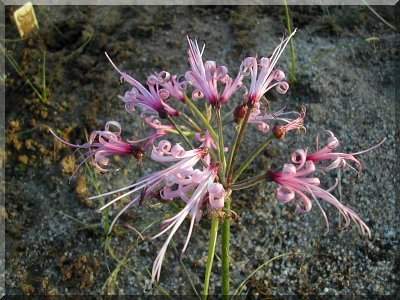 Left - Nerine filamentosa, one of the more delicate and splendid Nerine
species. The bloom look like some one has taken to them with the scissors
and then twirled the petals back.
Left - Nerine filamentosa, one of the more delicate and splendid Nerine
species. The bloom look like some one has taken to them with the scissors
and then twirled the petals back.
After the blooms grows thread like foliage, much the same as other in this group like N. masoniorum, N. filifolia and N. frithii. |
|
|
Below, a rare and not too often seen from of Nerine. N. laticoma ssp. sandersonii. Not the best image sorry. Still, one can see that this is a truly eligible candidate for breeding potential. Large leaves, tall peduncle and showy bloom. All the necessaries for a parent or pollen plant. This plant closely resemble Nerine laticoma in growth.
|
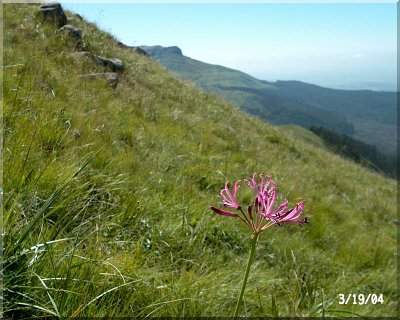 Pictured
left is Nerine angulata from Mt. Thomas, RSA. An easy to
grow Nerine, this one can handle a range of conditions, both in
soil and water content. It is a very versatile species indeed.
Growing up here in the mountains, it looks so serene waving
around in the breeze. What an excellent way to spend the day, fining
such beauties as these high above the worries of the world.
Pictured
left is Nerine angulata from Mt. Thomas, RSA. An easy to
grow Nerine, this one can handle a range of conditions, both in
soil and water content. It is a very versatile species indeed.
Growing up here in the mountains, it looks so serene waving
around in the breeze. What an excellent way to spend the day, fining
such beauties as these high above the worries of the world.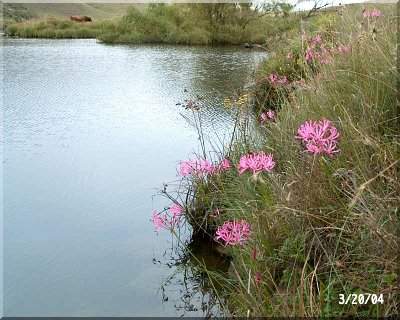
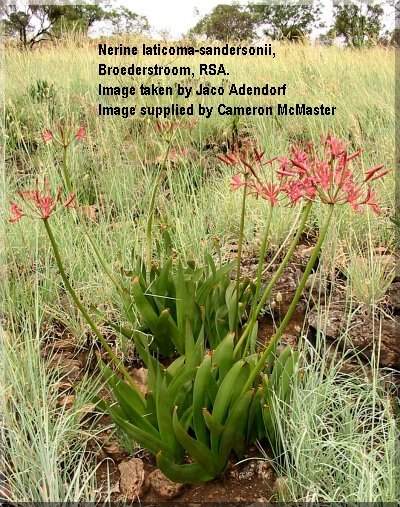
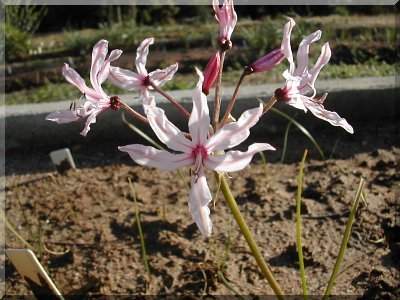 Left
- Nerine platypetala, a recently discovered Nerine species. This species
is semi aquatic, found growing in shallow pools of water in it's native
habitat.
Left
- Nerine platypetala, a recently discovered Nerine species. This species
is semi aquatic, found growing in shallow pools of water in it's native
habitat.